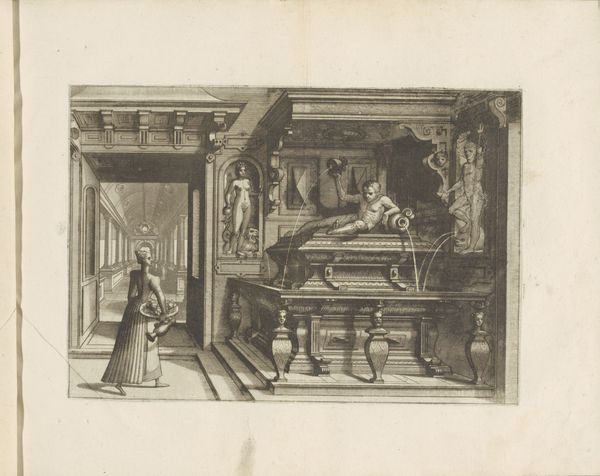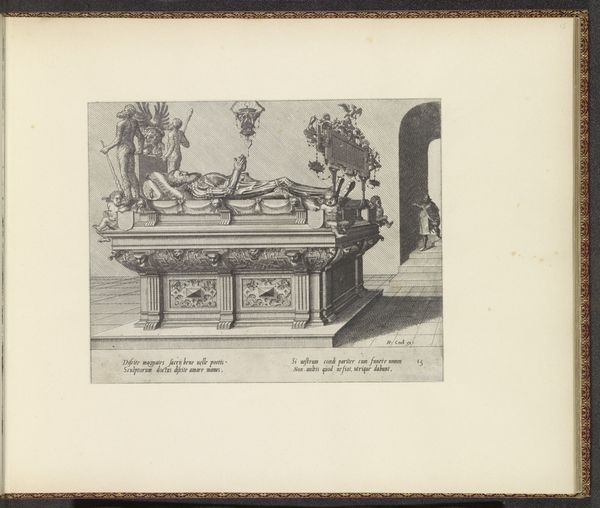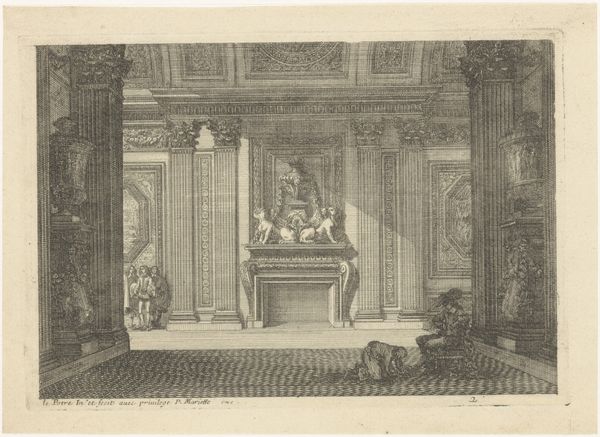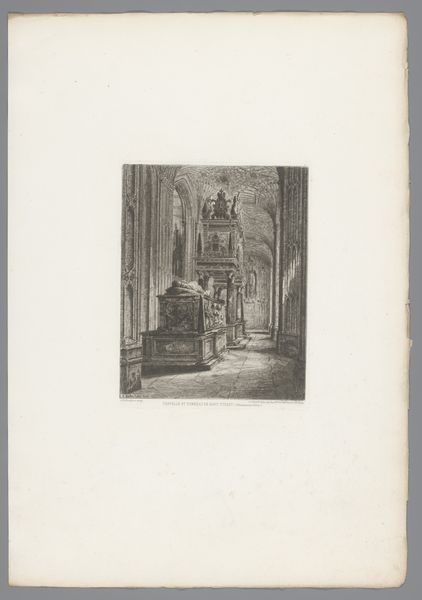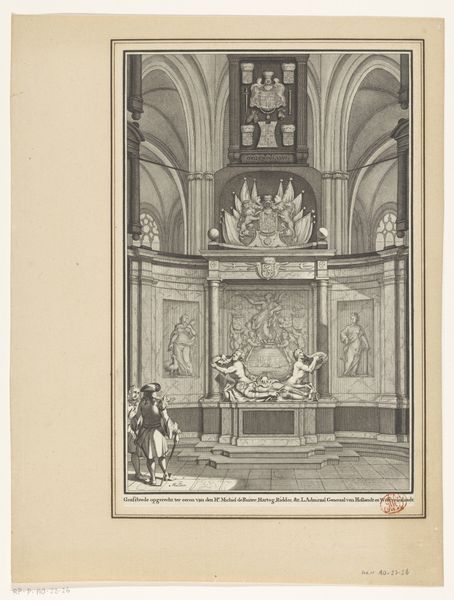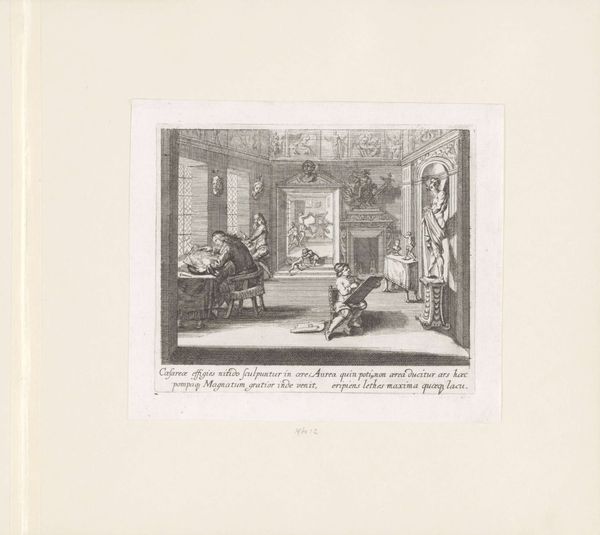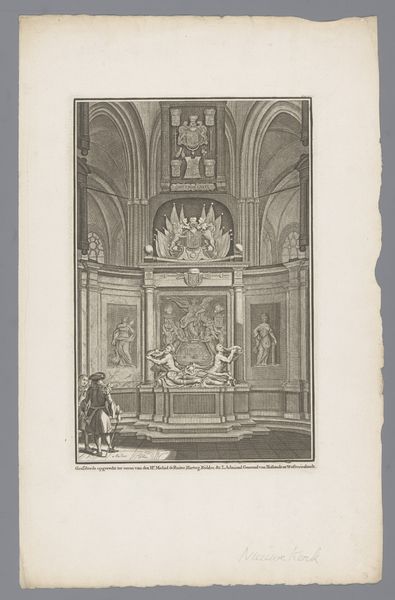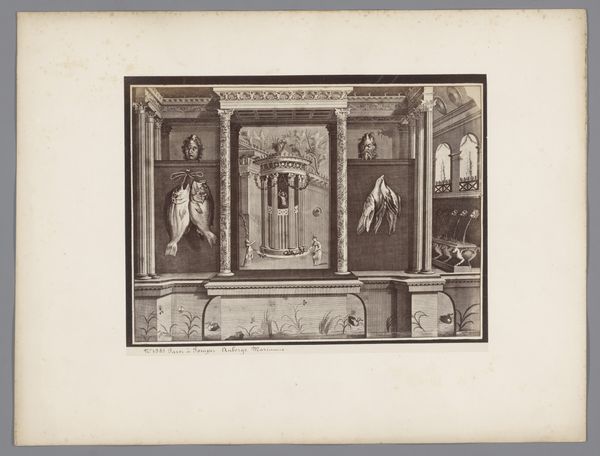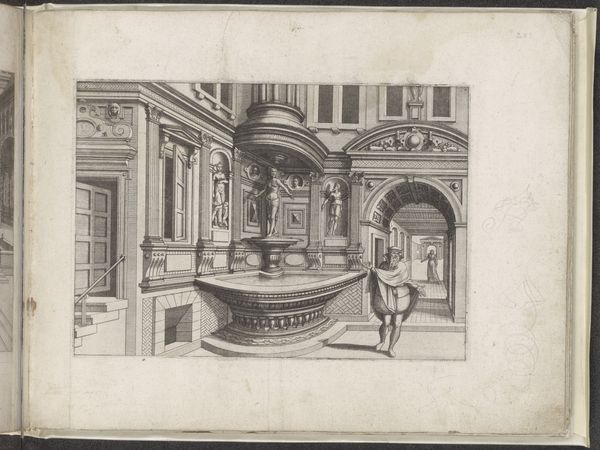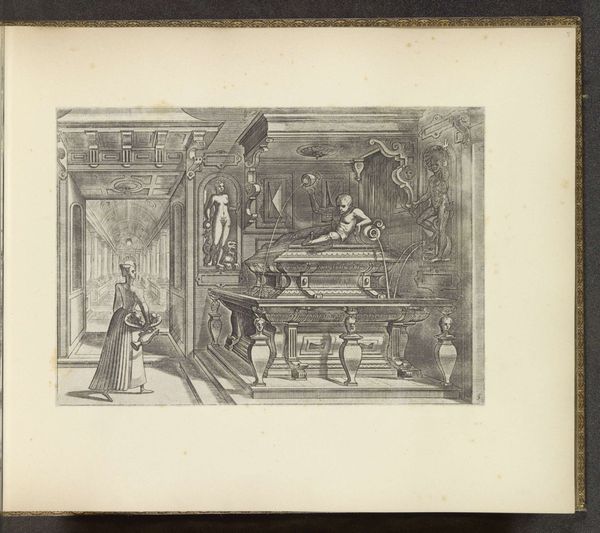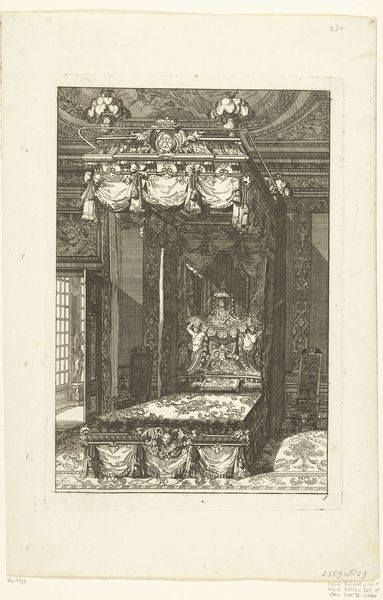
print, engraving, architecture
#
ink paper printed
# print
#
old engraving style
#
landscape
#
perspective
#
mannerism
#
figuration
#
personal sketchbook
#
history-painting
#
engraving
#
architecture
Dimensions: height 171 mm, width 244 mm
Copyright: Rijks Museum: Open Domain
Curator: This engraving, "Fontein in de vorm van een tombe," created by Joannes van Doetechum in 1568, presents us with a fascinating example of Mannerist printmaking. Editor: My first thought is the inherent drama of the scene—the almost theatrical quality of the light and shadow, the very pronounced architecture of the scene. Curator: Absolutely, that heightened theatricality is central to Mannerism. Look at how the artist has staged the fountain as a kind of performance. We have the central figure reclining atop what appears to be a sarcophagus. This elaborate presentation engages with complex social norms related to death, remembrance, and artistic innovation during the period. The fountain and figure within draw our eyes in, as the architecture around becomes further removed as a supporting actor. Editor: The tomb shape is fascinating. The obvious symbol, of course, is death, but considering that it is a fountain as well, the combination suggests renewal and perhaps some form of immortality. There is such heavy layering of references at play here. I wonder, is this related to the rising tensions as religious divides continued to widen? Curator: It is an interesting juxtaposition, death with renewal. It can even speak to ideas surrounding a form of resurrection. You have also drawn attention to a critical consideration: This work emerges amidst the great religious and political upheavals of the 16th century. These social conditions deeply influenced both the subject and symbolic construction within this artwork. Editor: What’s striking is the inclusion of what appears to be a figure with a platter near what seems like an opening into an enclosed patio with several columns. There is so much being presented here; where does the message settle? Curator: Yes, that female figure by the opening presents a somber counterpoint to the fountain's spectacle. She is placed outside of the primary architectural shape to represent the many ways the artist is constructing an experience for the audience in which each symbol connects. It can represent both life and loss while innovating artistically with architectural techniques. Editor: So, even within this relatively small print, we find ourselves pulled into a layered world of symbolic interplay. The artwork’s initial aesthetic impact is further deepened by an understanding of its place in the world of Mannerism. Curator: Yes, the fusion of death, renewal, social tension, and artistic ingenuity encapsulates the complexities of 16th-century Europe.
Comments
No comments
Be the first to comment and join the conversation on the ultimate creative platform.
